Max/MSP users can now easily convert their gen~ objects into LV2 plugins, add them to the roster of MOD Duo plugins and bring them to the stage!
More power to performing digital musicians
There’s no shortage of signal processing environments available to musicians who want to manipulate digital audio. Their use has spread to homes, studios and even stages everywhere. We’ve all seen this revolution take place, with computers popping up at concerts and the advent of laptop music performance. But a computer is not an instrument and a musician shouldn’t become a mere button pusher or mouse handler.
That’s where we come in. The MOD Duo is a computing platform for performing musicians, it’s a computer in a box, optimised to process audio during live performances. And since our creative platform is based on an open format, it can be useful to scores of artists and developers.
The Max/MSP software is one of the greatest and most powerful tools in this field and it has become one of the most used visual programming languages for music and multimedia since its inception in the 1980s. For months now, we’ve been collaborating with Cycling’74, the developers and maintainers of Max/MSP, in order to provide a new stage experience for their users and encourage developers to port their patches and objects into the MOD Duo plugin store.
We’ve come up with a Max package that takes the code exported from Max/MSP gen~ objects and takes care of compiling an LV2 plugin and putting it into the Duo. The whole idea is to simplify the process of having Max/MSP patches and turning them into plugins that can be used on stage without the burden of the computer and with the added controllability provided by the Duo.
“Wait a minute… I’m confused. What is Gen?”
If you’re not familiar with Max or have never heard of Gen, here’s an overview, courtesy of our friends over at Cycling’74:
“Gen is a new approach to the relationship between patchers and code. The patcher is the traditional Max environment – a graphical interface for linking bits of functionality together. With embedded scripting such as the js object, text-based coding became an important part of working with Max as it was no longer confined to simply writing Max externals in C. Scripting however still didn’t alter the logic of the Max patcher in any fundamental way because the boundary between patcher and code was still the object box. Gen represents a fundamental change in that relationship. The Gen patcher is a new kind of Max patcher where Gen technology is accessed.”
If you are an aficionado and were just waiting for this kind of solution to appear, we’ve come up with documentation to make the process of getting your Gen-based plugins to the MOD Duo as effortless as possible, with a wiki entry and a tutorial that shows you how to create your own plugins.
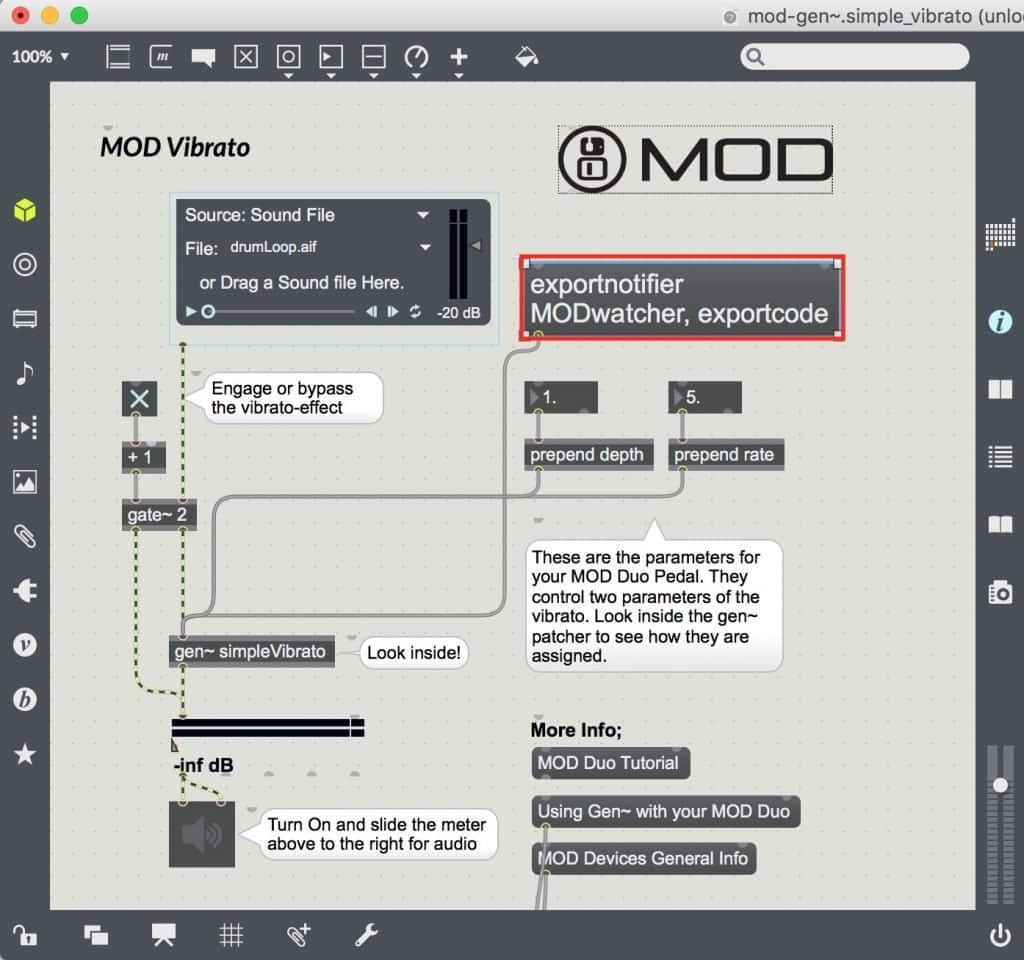
Why is it cool to have this integration?
This is no small feat.
We’re significantly speeding up the learning curve for adding personalized plugins to the Duo and also allowing digital musicians to take their Max/MSP objects to the stage without a computer. These new plugins will be fully compatible with the 200+ ones that are already available, allowing the creation of elaborate audio chains.
Right now, after being added to the users’ machines, these new plugins can be posted to the forum and we will publish them manually on the plugin store (we’re working on automating this process). Soon, when our commercial plugin store is setup and ready to go, Max/MSP wizards (and all of the MOD community) will be able to provide their creations for a fee, creating a new business in the process, but also promoting the development of more sophisticated audio apps by programmers. Until the commercial store arrives, demo version of these plugins can be published anyway.
In the future, we’ll keep adding new integrations and documentation for other languages and protocols such as Pure Data, Faust and OSC. Creating plugins for the Duo will be within everyone’s reach.
What are the current plugins that come from Max/MSP gen~ objects?
It all started a while ago, with the official gen plugin export project that Cycling’74 created for building audio applications and plugins. Our software developer, the legendary falkTX, then started doing an implementation of that focused on LV2 and Linux, which he inserted in his own open-source project that provides Cross-Platform Audio Plugins called DISTRHO.
At that time, he and our intern Nino de Wit began to run some tests and develop plugins from gen~code. From this effort, the initial project was born. Shortly afterwards, Nino began developing his own, more complex plugins. As Cycling’74 became aware of this, they contacted us and we decided to make a seamless integration between both platforms.
Here are the plugins derived from Max/MSP gen~ objects, conceived during Nino’s internship at MOD HQ in Berlin. These little gems have been making many MOD users happy since they came around. Here’s a glimpse at the type of plugin this integration will enable users to create:
Shiroverb
Shiroverb is a shimmer-reverb based on the “Gigaverb”-genpatch, ported from the implementation by Juhana Sadeharju, and the “Pitch-Shift”-genpatch, both in Max MSP.
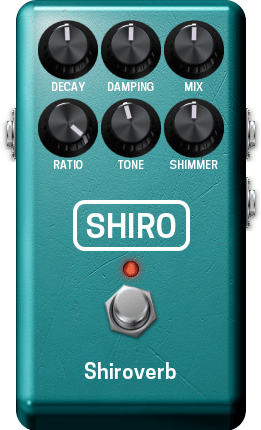
Modulay
Modulay is an analog-style delay with variable types of modulation based on the setting of the morph control. All the way counterclockwise is chorus, 12 o’clock is vibrato, and all the way clockwise is flanger. With every setting in between morphing from one effect to the other.
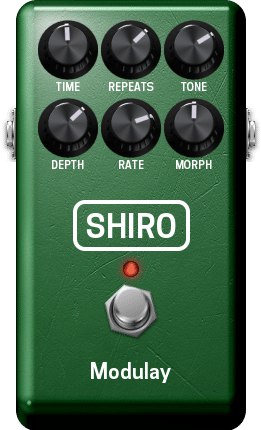
Larynx
Larynx is a simple sine-modulated vibrato with a tone control.
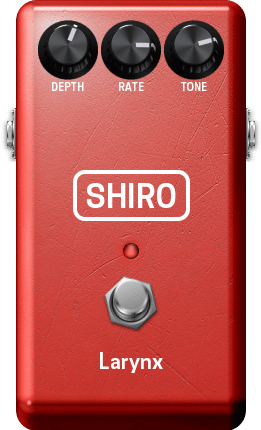
Harmless
Harmless is a wave-shapeable harmonic tremolo with a stereo phase control.
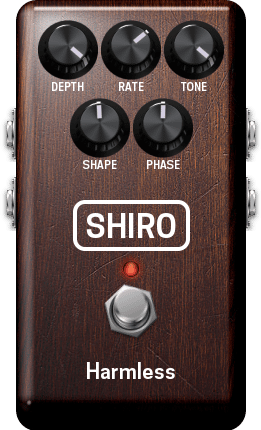
Pedalboards section!
You can check out and listen to the Shiro plugins in action in these sweet pedalboards that our community has created and shared (and load them into your Duo at the click of a button):
Swell Boost:
Swell Boost
Everything a multi-layered guitarist needs in their arsenal: a succulent and smooth shimmer swell pad on one path, and a shrieking shrill boost on another path that cuts through the mix like a Japanese ginsu knife! The best part is that there's a 4-way toggle switch at the start of the chain that allows the source signal to constantly flow, but the 1st and 4th switches toggle either the pad or the boost (or BOTH if you want the NUCLEAR option!). This allows the guitarist to cut the pad or boost, but results in the pad's trails to remain in the mix as the source signal never changes. Putting together this pedalboard has convinced me of the amazing utility of the Mod Duo. Special thanks to Gianfranco for the boost – I got it early on, but forget what he named it.
Everything a multi-layered guitarist needs in their arsenal: a succulent and smooth shimmer swell pad on one path, and a shrieking shrill boost on another path that cuts through the mix like a Japanese ginsu knife! The best part is that there’s a 4-way toggle switch at the start of the chain that allows the source signal to constantly flow, but the 1st and 4th switches toggle either the pad or the boost (or BOTH if you want the NUCLEAR option!). This allows the guitarist to cut the pad or boost, but results in the pad’s trails to remain in the mix as the source signal never changes.
ShimmerMachine:
ShimmerMachine
Using the new Harmless by Shiro, combined with the Larynx on my Novation Circuit. Also using the new Guitarix VibroChump, spiced up by the TAP Tubewarmth for a warmer sound. The Shiroverbs are set to octave down and octave up for very different shimmer sounds.
Using the Harmless plugin combined with the Larynx on a Novation Circuit.
Harmless JCM:
Harmless JCM
Trying out the JCM-800 and the Shiro Harmless modulator. Such a beautiful sound!!!
Guitarix JCM-800 and the Shiro Harmless modulator. Such a beautiful sound! Add a little looper and you’re good to go 🙂
Soap Bubbles:
Soap Bubbles
Psychedelic sound based on Larynx, Chorus and some Panning. Reminds me of the psychedelic sound of the beatles. Control the larynx with k1/s1 and the panning with k2/s2. Let me know what you think, and any improvements you could imagine.
Psychedelic sound based on Larynx, Chorus and some Panning.
Modulay Madness:
Enjoy the Modulay in a simple guitar setup.
201b Pad Shiroverb:
Huge pad sound with a parallel path for melody, played on a bass.
KalimbaJammSessionMOD
Pedalboard used during the Startup Garden at Wallifornia Music Tech. We wanted to show visitors that you can also use the MOD Duo with acoustic instruments and created this nice pad using a synth, a sequencer and a kalimba with a pickup for some solo play. Listen to that tremolo!
Makeshift Pitchshift:
Makeshift Pitchshift
Using the 'shimmer' in the Shiroverb as a pitch-shifter. It's pretty glitchy, in a really cool way, and produces artifacts that sound like vinyl crackle 🙂 The shimmer pitch is assigned to a CC pedal, and the tube screamer, tremolo and delay are all controlled via midi
Using the ‘shimmer’ in the Shiroverb as a pitch-shifter on the bass.
We want to know if you are as thrilled as we are with this integration. Do you look forward to creating your own plugins from Max/MSP? Are you excited about the commercial store? Share your thoughts in the comments below!
PS: Special Offer
If you buy a MOD Duo before September 30th 2017, you get Max7 for 9 months COMPLETELY FREE.
If you are already a MOD user, you can get Max7 for 9 months for free as well by completing the Great Book of Pedalboards form.
Comments
Comments are closed.